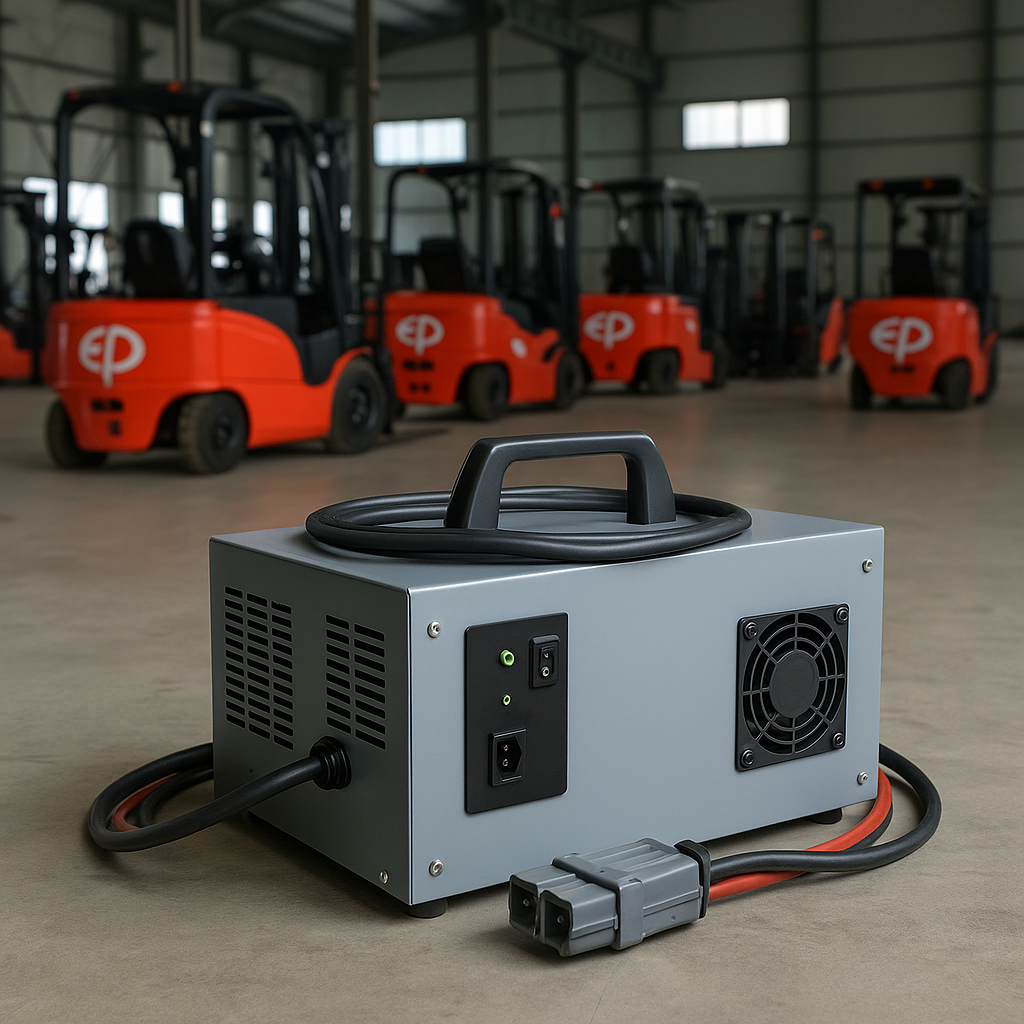Structure of a Forklift Charger: Understand Properly for Safe and Efficient Use
Structure of a Forklift Charger: Understand Properly for Safe and Efficient Use
A forklift charger is a crucial device that maintains power for electric forklifts to operate stably. Understanding the structure of a forklift charger not only helps users operate it correctly but also extends the lifespan of both the charger and the battery.
🔋 1. Power Transformer
This component converts mains voltage (220V or 380V AC) to a suitable voltage level for the battery (commonly 24V, 36V, 48V, or 80V DC).
It is a fundamental part of most AC-powered forklift chargers.
🔌 2. Rectifier Circuit
The rectifier circuit converts alternating current (AC) to direct current (DC), ensuring a stable charging process that matches the battery’s requirements.
Diode bridges or rectifier ICs are commonly used here.
🧠 3. Charging Controller
This is the intelligent control center of the charger. It can automatically:
-
Detect the battery status
-
Adjust charging current and voltage
-
Cut off charging when the battery is full or when errors (overcurrent, overheating) occur
For lithium batteries, the controller also communicates with the BMS (Battery Management System).
🌡️ 4. Thermal Sensor
This sensor monitors the temperature during charging. If it exceeds safe limits, the charger automatically reduces power or shuts off to protect the battery.
⚠️ 5. Protection Circuit
This component protects both the charger and the forklift from dangerous conditions such as:
-
Overvoltage
-
Overcurrent
-
Short circuit
-
Reverse polarity
Thanks to this, users can safely charge their forklifts daily.
❄️ 6. Enclosure & Cooling System
Chargers are designed with insulated, heat-resistant, and dustproof casings. Internal fans help dissipate heat during continuous operation.
🔌 7. Charging Cable and Connector
The charging cable is durable, flame-retardant, and compatible with different connector types:
-
Standard DIN plug
-
Anderson plug
-
BYD charging plug
-
Or specific plugs based on forklift models
📝 Conclusion
Understanding the structure of a forklift charger helps ensure safe use, battery protection, reduced fire risk, and maintenance cost savings. Whether using lead-acid or lithium batteries, always choose a genuine charger and perform regular inspections to ensure optimal performance.



